Some Sunday Stuff: January 12th.
Can you believe we’re this far into January already? Whew, I can hardly believe it. Buuut, before we consign the 2010s to the history books, let’s take a look back shall we?
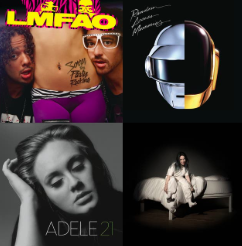
First up, this Hit Parade podcast, hosted by Chris Molanphy, that breaks down the top of the pop charts from the last decade. Here’s some of the transcript of the episode:
In movies, the 10s will be remembered for better and worse as the decade of the Marvel Cinematic Universe on television. We will remember the tens as a golden age of peak TV from Breaking Bad to Game of Thrones. But music will this decade of popular song be remembered for anything at all?
Some of this confusion is due to the difficulty we critics have summarising.
An art form as ever evolving as popular music, which has always moved through phases faster than movies or TV. And some of it is just the typical declinist narrative we see at the end of any decade. The idea that the period we just experienced was the worst ever.
It’s like the every other decade. The 50s were boring, the 60s rocked the 70s. They obviously. So maybe the 80s will be radical.
Someone will be nostalgic for the music of the 2010s someday. And it probably won’t be critics who are in their 30s and 40s now. Speaking of which, your hit parade host, who is a bit older than a teenager, has a special relationship with the 10s. As I note at the top of every episode, I am the writer of Slate’s Why Is This Song Number One series since the start of this decade, both for Slate and earlier for other publications? I have written about most of the number one hits on Billboard’s Hot 100 from the Respectable.
To the better forgotten.
It’s my job to think about what hit music means both in the moment and in the big picture.

And one thing I can tell you, and this is nearly four decades of pop chart obsession talking the 10s. Broadly speaking, we’re like every other decade of pop. There were trendless and fats. The pendulum swung.
And the hits we enjoyed were a mirror, however imperfect, of our culture.
That culture was shifted this decade by technology as much as it was by politics or demographics. The ways we consumed music, these digital mediums shaped the songs we sent to the top of the Billboard charts, down to the genre and even the gender of the hitmakers many.
Go listen to this episode and the entire podcast, which is definitely among my absolute favorites, here. Next up, let’s do some more time traveling with this fun post from House Beautiful that’s chock full of wedding pictures from the past century. Please note that all photos and text are from the original article:

Overseas in Britain, where many of the country’s young men had been sent off to war, young couples began forming romances through letter writing. Many of these couples became engaged without ever having met face to face, a phenomenon that resulted in a large number of “hasty war weddings.”
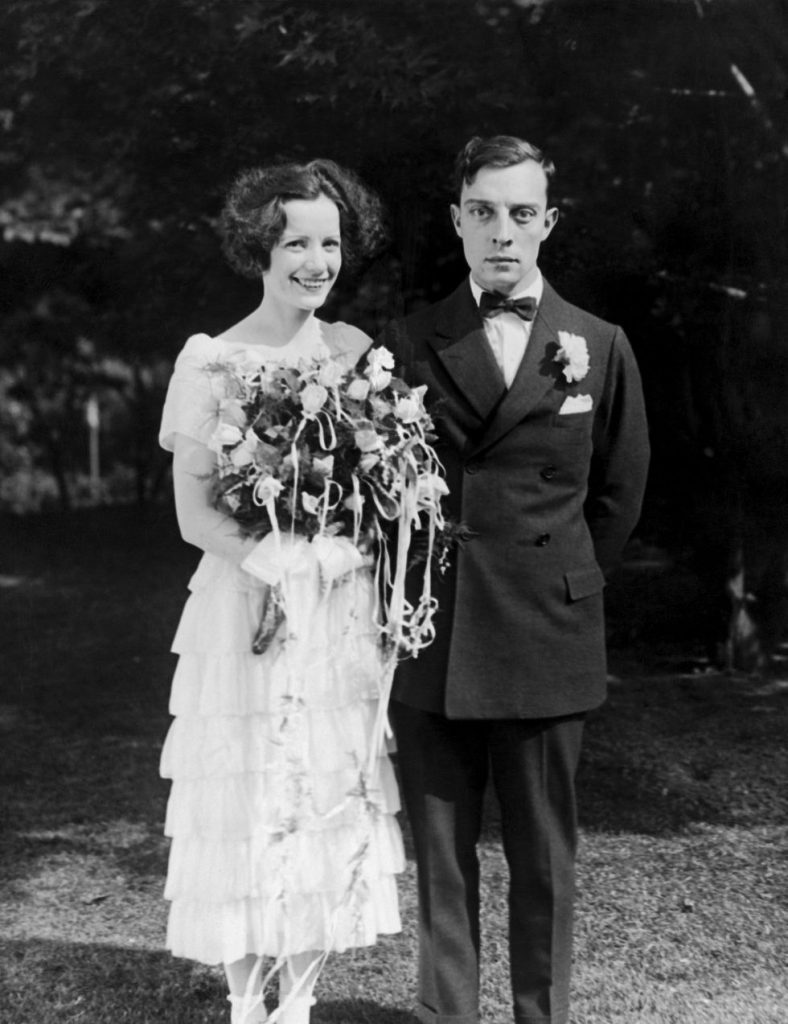
Silent film actress Natalie Talmadge married Hollywood great Buster Keaton in 1921, carrying a bouquet of roses intertwined with long ribbon streamers, a popular bouquet style in the U.S. at the time.

King Edward VIII gave up his crown to marry Wallis Simpson, a twice-divorced American, on June 1937. At just 326 days, Edward’s reign was one of the shortest in British history.

Wartime weddings, such as this English couple’s town hall ceremony, often saw the groom wearing his military uniform, while the bride donned her best dress in lieu of a gown.
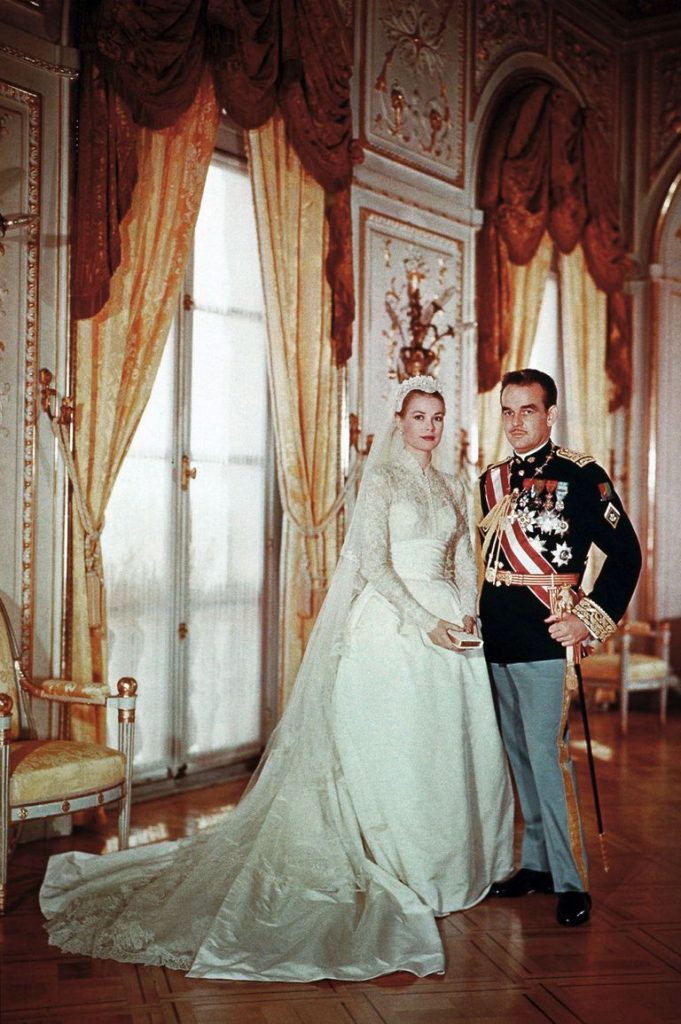
A wedding for the history books, Grace Kelly wed the Prince of Monaco in 1956, making the Hollywood starlet a real-life princess. Her wedding dress, designed by Helen Rode of MGM, is known as one of the most iconic wedding dresses and of all time— it’s now on display at the Philadelphia Museum of Art.
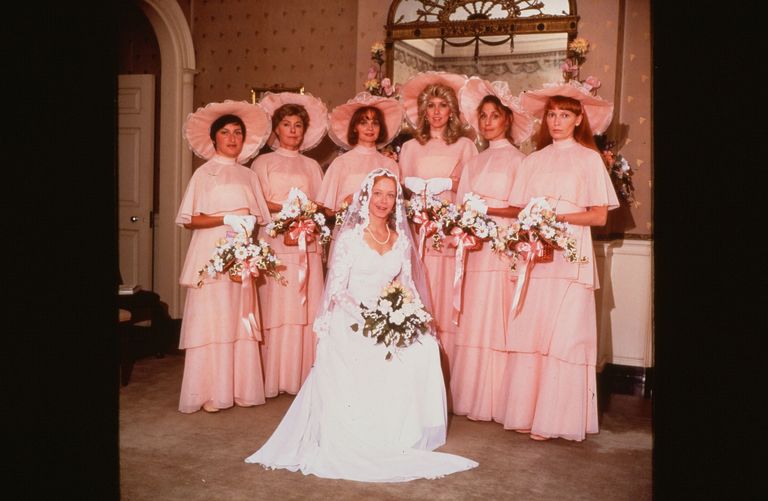
Another trademark of bridesmaid style in the ’70s? Lots of color, and floppy hats, as seen in this still from the 1978 movie A Wedding.
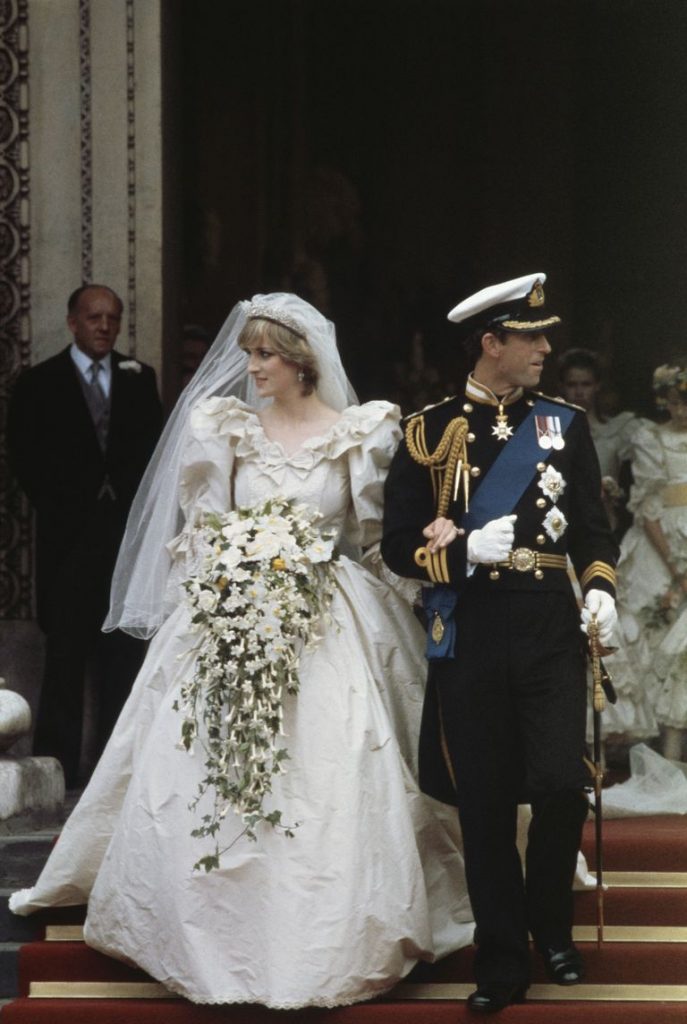
The 1981 wedding of Lady Diana Spencer and Prince Charles was an absolute game changer in the wedding world. An estimated 750 million people watched the ceremony on television—and soon brides everywhere were demanding a fairytale wedding.

Sex and the City fans flood theaters to see Sex and the City: The Movie, wanting to find out the fate of Carrie and Mr. Big’s relationship—and what she’ll wear to the wedding. (Spoiler alert: He leaves her at the altar wearing an over-the-top Vivienne Westwood gown and feather fascinator.)

See all one hundred slides here. Now over to Brain Pickings for Maria Popova’s list of the best children’s books of 2019. I’m going to excerpt from her section on the book, Layla’s Happiness:
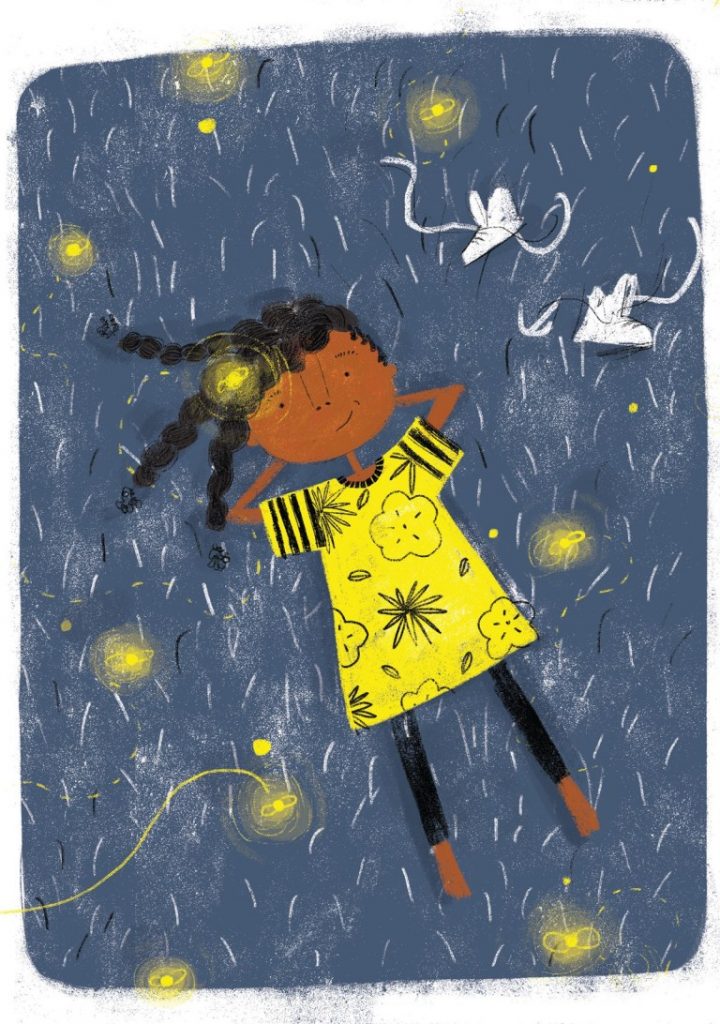
“What is your idea of perfect happiness?” asks the famous Proust Questionnaire. Posed to David Bowie, he answered simply: “Reading.” Jane Goodall answered: “Sitting by myself in the forest in Gombe National Park watching one of the chimpanzee mothers with her family.” Proust himself answered: “To live in contact with those I love, with the beauties of nature, with a quantity of books and music, and to have, within easy distance, a French theater.”
The touching specificity of these answers and the subtle universality pulsing beneath them reveal the most elemental truth about happiness: that there are as many flavors of it as there are consciousnesses capable of registering it, and that it is a universally delicious necessity of life, which we crave from the day we are born until the day we die. And yet, as Albert Camus lamented, “happiness has become an eccentric activity. The proof is that we tend to hide from others when we practice it.”
Half a century later, as we wade through a world that gives us ample reason for sorrow, as existential credibility seems meted out on the basis of how loudly one broadcasts one’s disadvantage, the savoring of happiness has become an almost countercultural activity — an act of courage and resistance, and one the practice of which is a whole life’s work, as George Eliot well knew when she observed that “one has to spend so many years in learning how to be happy.” Why, then, not make the learning of happiness as essential a part of young people’s education as the learning of arithmetic? Or even stand with Elizabeth Barrett Browning in deeming it our moral obligation?
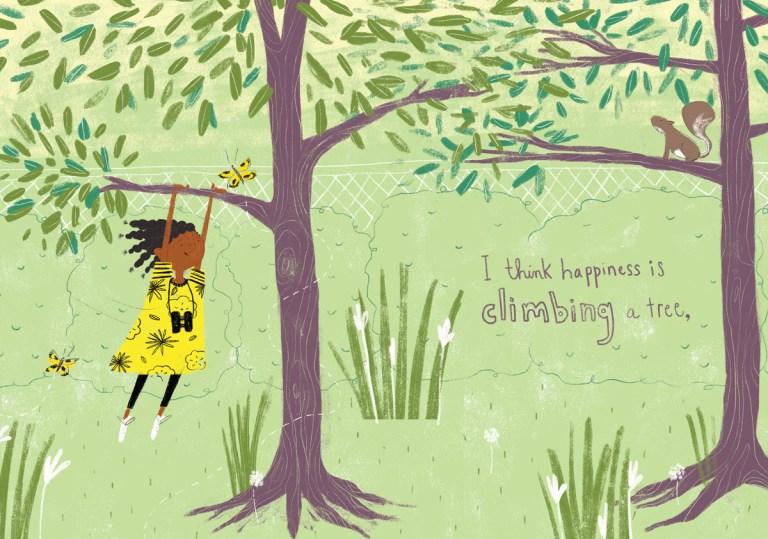
All of that — the personal nature of happiness, the daily practice of it, its centrality to participating meaningfully in the world — is what poet Mariahadessa Ekere Tallie explores in her vibrant and vitalizing picture-book debut, Layla’s Happiness (public library), illustrated by artist Ashleigh Corrin.
Like Sylvia Plath, who composed The Bed Book for her own children, Tallie — who describes herself in A Velocity of Being: Letters to a Young Reader as “the mother of three galaxies who look like daughters” — has written the book for her youngest galaxy, the book she wished she’d had to read to the elder two.
Tallie constructs the story like a good poem, where the personal is the most welcoming gateway to the universal. We see seven-year-old Layla — whose name means “night beauty” — tally her exuberant everyday sources of happiness.
Happiness leaps at Layla from the color purple, from the succulence of fresh plums, from the constellations of the night sky, from the mischievous delight of slurping spaghetti without a fork. It unspools from her lips as she hums while feeding the chickens at the community garden and names all the trees and greets the neighbors at the farmers’ market where she sells the vegetable she has grown from seeds. It pours forth from the poetry her mother reads to her under a makeshift tent and from the tales her father tells her of his own childhood in the South.
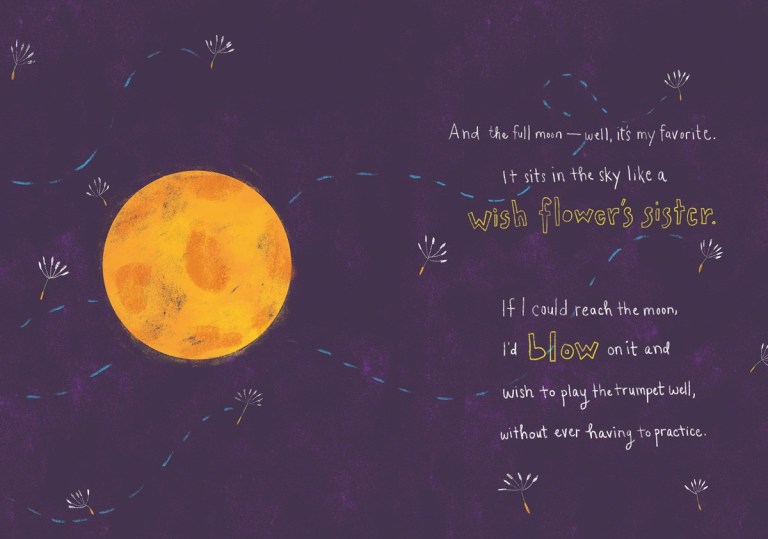
Read the rest of Popova’s take on Layla’s Happiness and all the rest of her best of children’s books here. My own personal bit of happiness right now is the Thai tofu spicy basil rice I just ate and the Thai iced coffee I’m still sipping. Also, the following video from Glamour that’s part of their “Glamour Evolutions” series. It’s winter, despite this weekend’s unseasonably warm weather here in Jersey, and as such, very much coat-wearing weather. Watch this video for the past century’s trends in ladies’ coats:
And finally, here’s Alicia Keys’ video for “Un-Thinkable” (which will be ten in May!). I’m choosing this for all the decade flips, fashion, and Chad Michael Murray (s/o to a young, 1980s Tommy). Have a great week.
